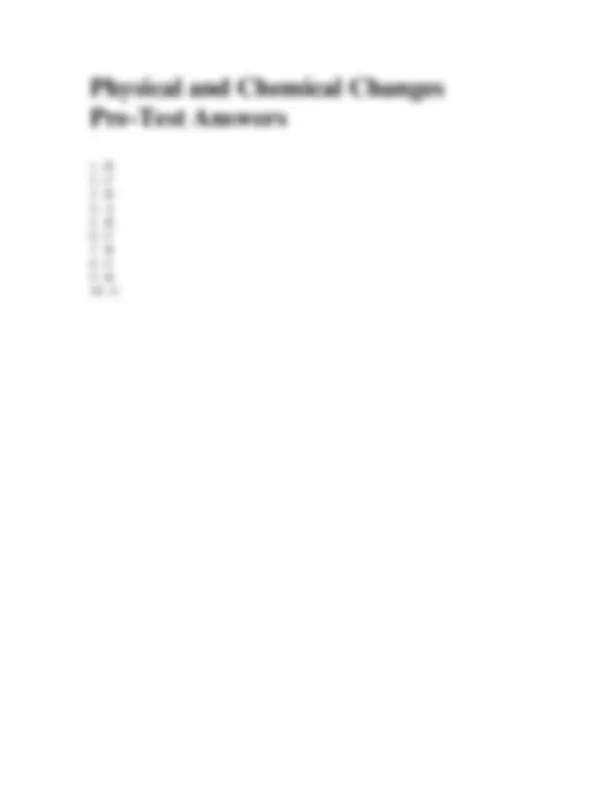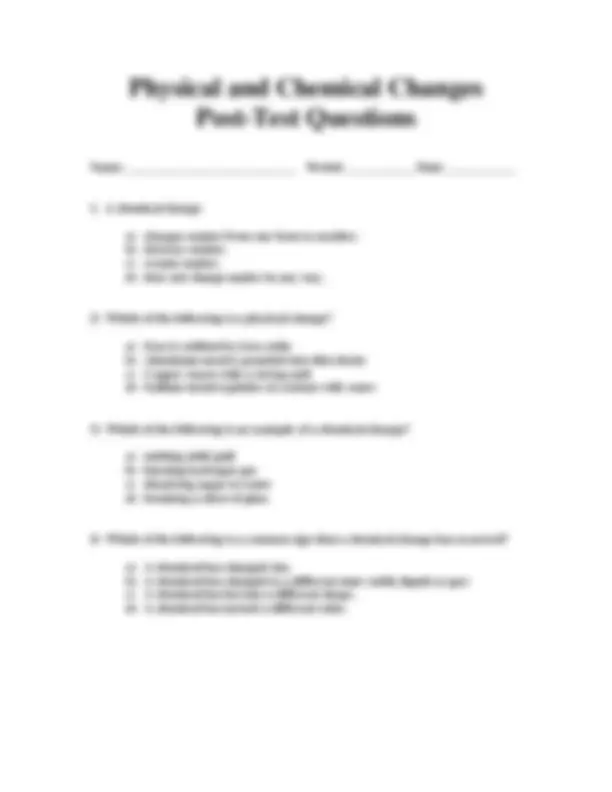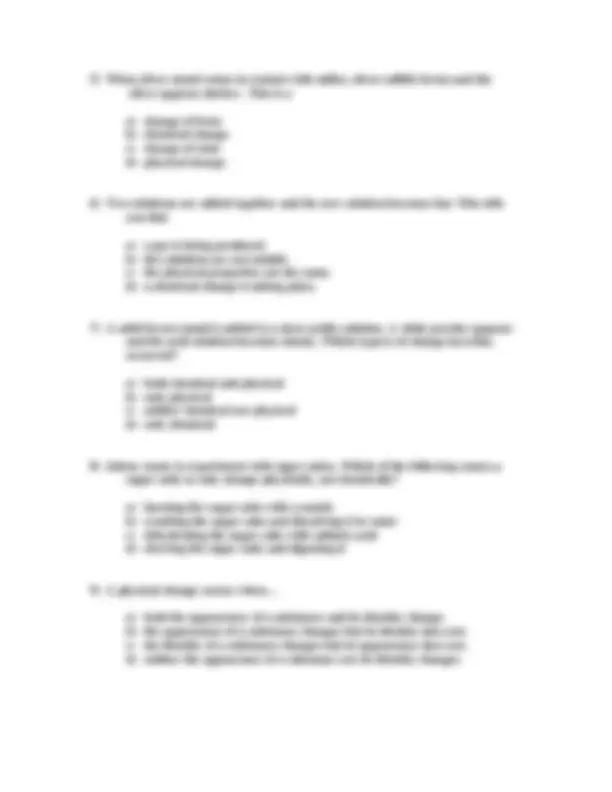





Study with the several resources on Docsity

Earn points by helping other students or get them with a premium plan


Prepare for your exams
Study with the several resources on Docsity

Earn points to download
Earn points by helping other students or get them with a premium plan
Community
Ask the community for help and clear up your study doubts
Discover the best universities in your country according to Docsity users
Free resources
Download our free guides on studying techniques, anxiety management strategies, and thesis advice from Docsity tutors
Which of the following is an example of physical change? a. Mixing baking soda and vinegar together, and this causes bubbles and.
Typology: Study notes
1 / 7

This page cannot be seen from the preview
Don't miss anything!




Name: ____________________________ Period: ___________ Date: ___________
a. Mixing baking soda and vinegar together, and this causes bubbles and foam. b. A glass cup falls from the counter and shatters on the ground. c. Lighting a piece of paper on fire and the paper burns up and leaves ashes. d. Baking a birthday cake for your mother.
a. Filling up a balloon with hot air. b. Taking a glass of water and freezing it by placing it in the freezer. c. A plant collecting sunlight and turning it into food. d. Your dog ripping up your homework.
a. Chemical Change b. Physical Change c. Both a physical and chemical change d. Neither a physical or chemical change
a. Chemical change b. Physical change c. Freezing d. boiling
a. Chemical change b. Physical change c. Both a physical and chemical change d. Neither a physical or chemical change
a. Metal rusting b. Silver tarnishing c. Water boiling d. Paper burning
a. Composition changes b. Composition stays the same c. Form stays the same d. Mass is lost
a. Water freezes b. Wood is cut c. Bread is baked d. Wire is bent
a. Change in color b. Change in shape c. Change in energy d. Change in odor
a. Density b. Shape c. Mass d. Arrangement of particle
Name: ____________________________ Period: ___________ Date: ___________
1. A chemical change
a) changes matter from one form to another. b) destroys matter. c) creates matter. d) does not change matter in any way.
2) Which of the following is a physical change?
a) Iron is oxidized to iron oxide b) Aluminum meal is pounded into thin sheets c) Copper reacts with a strong acid d) Sodium metal explodes on contact with water
3) Which of the following is an example of a chemical change?
a) melting solid gold b) burning hydrogen gas c) dissolving sugar in water d) breaking a sheet of glass
4) Which of the following is a common sign that a chemical change has occurred?
a) A chemical has changed size. b) A chemical has changed to a different state (solid, liquid or gas) c) A chemical has become a different shape. d) A chemical has turned a different color.
5) When silver metal comes in contact with sulfur, silver sulfide forms and the silver appears darker. This is a
a) change of form b) chemical change c) change of state d) physical change
6) Two solutions are added together and the new solution becomes hot. This tells you that
a) a gas is being produced. b) the solutions are not soluble. c) the physical properties are the same. d) a chemical change is taking place.
7) A solid brown metal is added to a clear acidic solution. A white powder appears and the acid solution becomes cloudy. Which type(s) of change have/has occurred?
a) both chemical and physical b) only physical c) neither chemical nor physical d) only chemical
8) Jolene wants to experiment with sugar cubes. Which of the following causes a sugar cube to only change physically, not chemically?
a) burning the sugar cube with a match b) crushing the sugar cube and dissolving it in water c) dehydrating the sugar cube with sulfuric acid d) chewing the sugar cube and digesting it
9) A physical change occurs when…
a) both the appearance of a substance and its identity change. b) the appearance of a substance changes but its identity does not. c) the identity of a substance changes but its appearance does not. d) neither the appearance of a substance nor its identity changes.